Workflow and Card States
At the heart of Codecks is a unique workflow and conversation model. If you want to make sure to understand how magical Codecks can feel, then this is the part to pay attention to. It can turn your team work into a finely tuned steampunk machinery of joyful efficiency (you can probably tell, we’re really excited about this part).
By default all cards are in Unassigned state. All other states are optional and may or may not be used depending on your own preference. We recommend using all of them to appreciate the full power of Codecks.
The only cards not using this workflow are Hero Cards and Doc Cards.
Unassigned and Assigned card

These are the defaults states for cards with (assigned) and without (unassigned) owners.

Cards can represent whatever you put on them. Not all cards will contain actionable tasks and it is completely fine for cards to always stay in this state if applying a work state to them makes no sense.
Examples for cards where it might make no sense to assign work states are technical or organizational look-up documents, overarching game design documents and similar cards.
Started cards
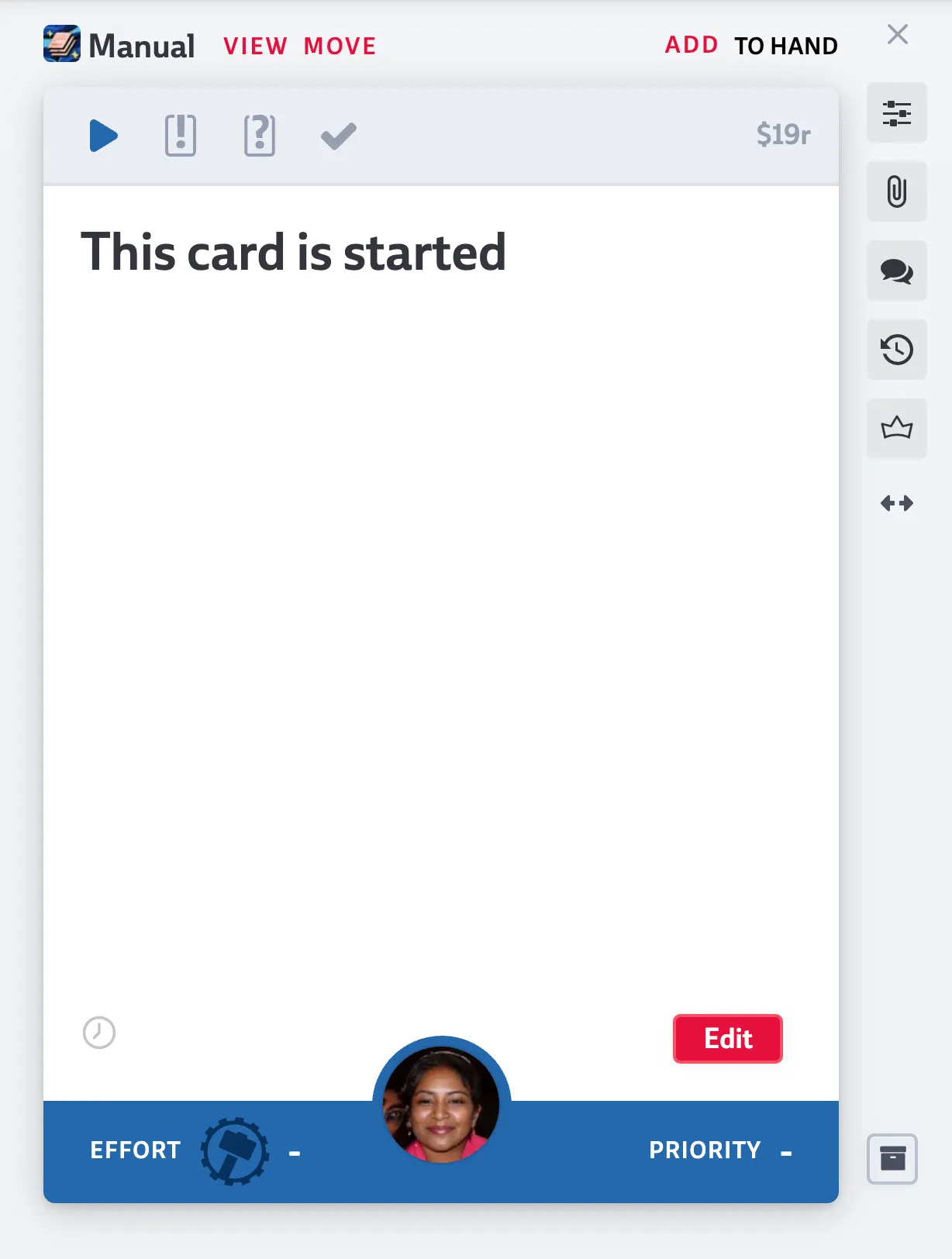
Cards that represent tasks and that you are working on should be put into the started state by pressing the play button on top of the opened card. As a quick shortcut you may also press the spacebar while mouse hovering over the (mini) card.
Be aware that cards that are started must have an owner. If you start a card that currently has no owner, the card will be automatically assigned to yourself before being set to started.
Started cards are shown in blue color and signal your teammates that you’re actively pursuing the work that this card represents.
Blocked Cards
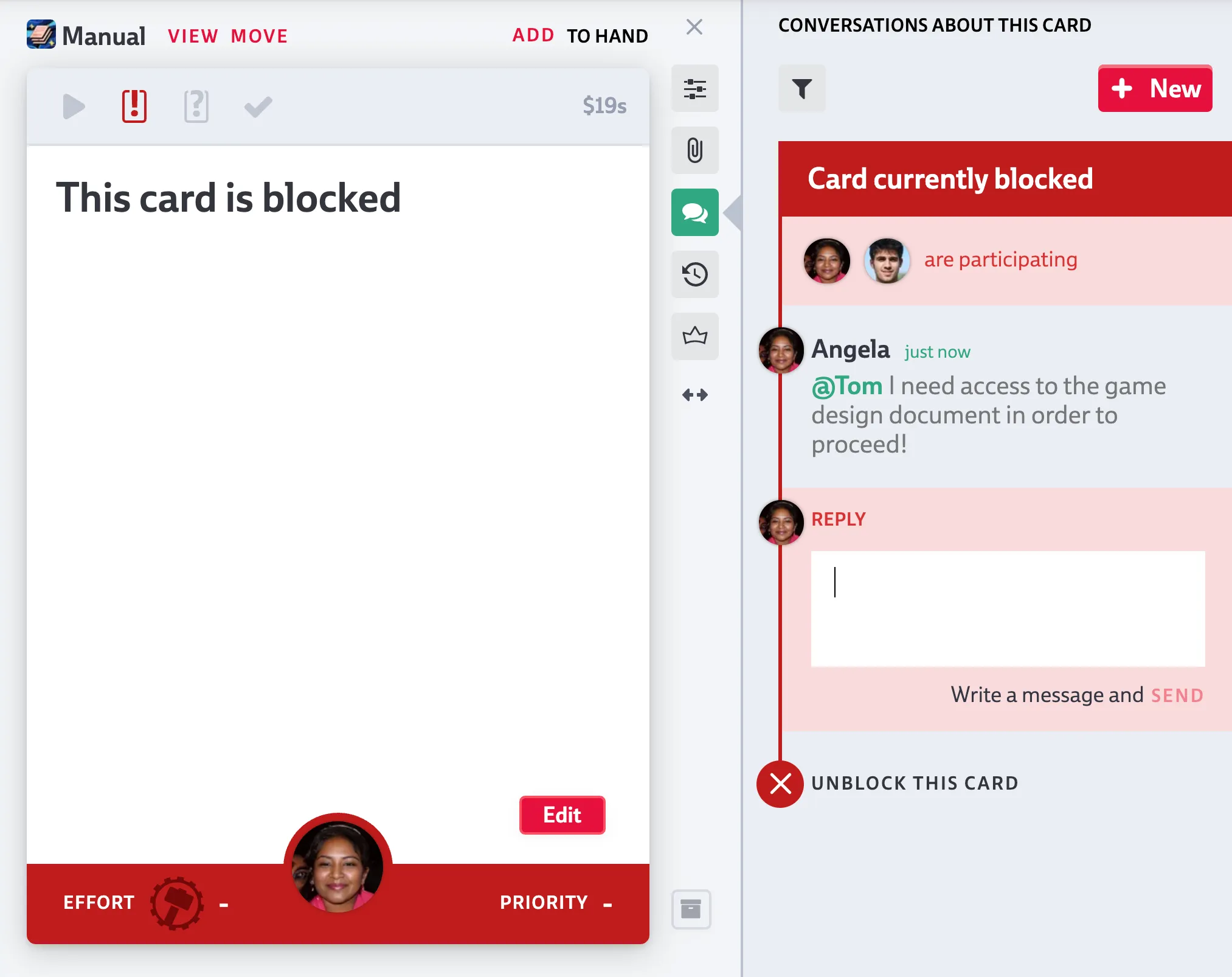
Alas, as in life not everything in game dev or project management always runs smoothly. While you are working on the card, you may run into a roadblock in the form of missing information, missing assets or technical issues. In this case you may set the card to blocked by clicking the exclamation point icon on top of the opened card.
This opens a special conversation thread. Use it to draw team mates into a conversation and to describe the issue that you’re currently facing. Use the portrait icons or typing @ to add as many team members as you need to resolve the situation. Whereas cards can only be assigned to one person at most, there is no limit to how many of your team mates can be involved in discussions.
If you’re working solo or you are blocked by outside influences you can still set the card to blocked even without drawing in additional team members. This will help signal to yourself or to other team members why you currently can’t proceed on a certain task.
Send the message by pressing ctrl/cmd + enter or click the send button and your mentioned team mates will receive a notification alert informing them that you are stuck and need help. Blocked cards are shown in red color.
As your team members reply to the block conversation and give you valuable information, you get notifications for each reply. Depending on the information you may want to draw in additional people by mentioning them in your comment. Team members that can’t help may opt out of the conversation (see the conversations document for more info).
Once the underlying issue is resolved, you can unblock the card by clicking on the unblock this card button below the block conversation. This will put the card back into its previous state. The special block conversation will be closed doing this.
If you are running on real-time tracking the time that the card spends in blocked state is not counted towards the work time of the card.
In-Review Cards
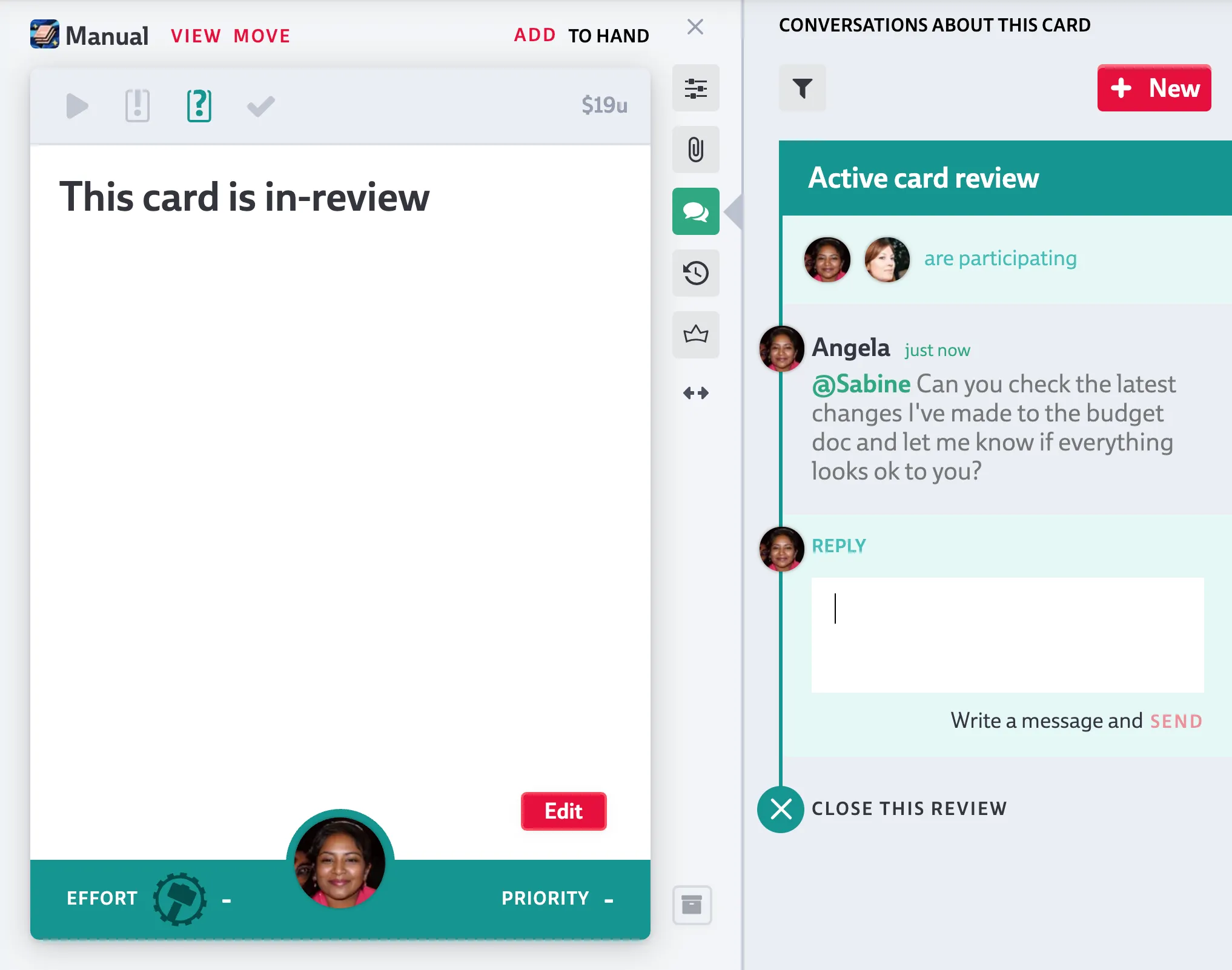
Let’s assume everything now goes swimmingly and you’re able to finish the work on the card. If you are looking for the opinion or approval of other team members, you can put the card into review state by clicking the question mark icon above the opened card.
Doing this opens a special review conversation. As with block conversations or regular conversations you may select as many team mates as you want or need. All mentioned team members get a notification and can support you with the required feedback.
As with block conversation it is not required to draw in any person at all and you can set the review state even if you’re the only participant. In-review cards are shown in turquoise color.
Once you’ve gained enough feedback you may end the review state by clicking the ‘close this review’ button. After doing that the card will ask you if you want to set the card to done as well.
Done Cards and Archived Cards
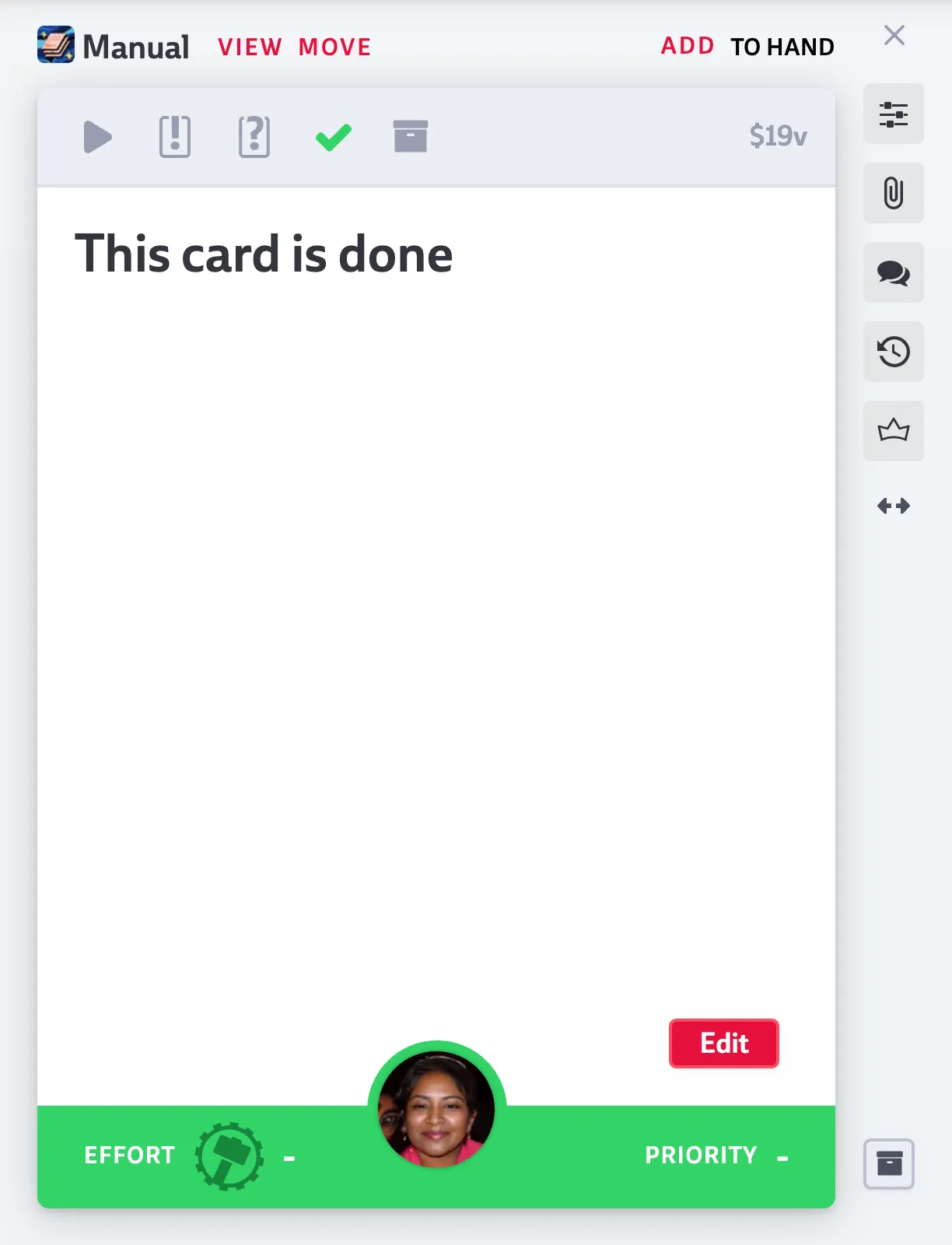
Done cards are shown in green color and represent cards that don’t have any actionable tasks left to do. You may reach this card state after going through the whole started-blocked-review workflow or by simply setting a card directly to done. How many or few of the workflow steps you use is up to you and your team. We recommend using the full workflow for maximum magic of course.🧙♂️
Cards which are done feel great but might clutter up your Decks, Runs and Milestones as time passes. Codecks auto archives done cards after a set amount of time. You can customize that time limit in the organization settings (reachable via the joystick button in the top left).
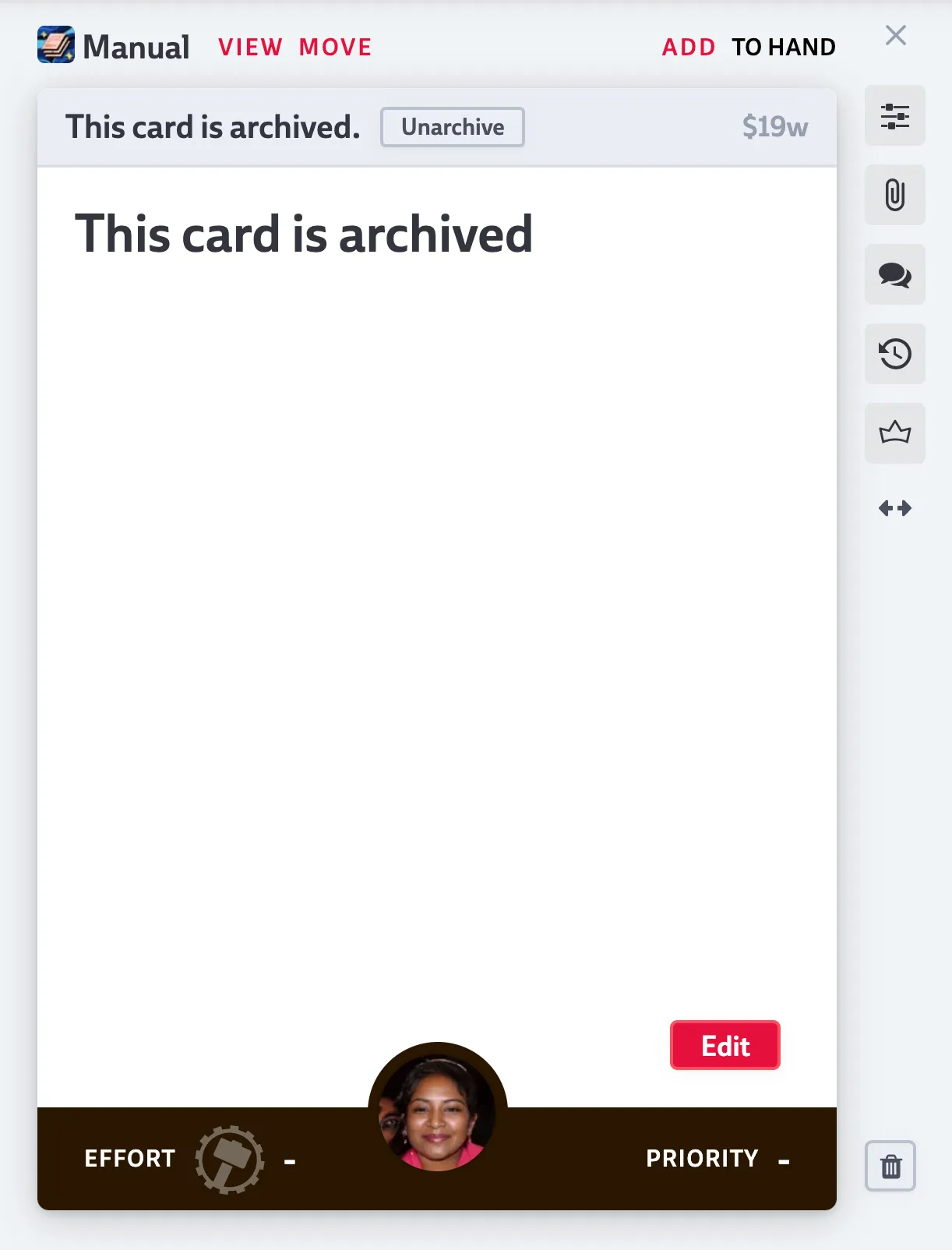
Archived cards look like regular cards with an additional icon on the card. By default they are hidden from the deck view or search results but can be retrieved by using the include archived button in the top-right area of any search popup box. As a shortcut, Decks, Runs and Milestone views also feature a include archive button directly next to the search input field.
You can also skip the auto-archival step and manually archive cards by clicking the archive button in the bottom right area of opened cards. Cards that were archived but not done yet, are shown in a dark gray color to signal that they have become obsolete.
Once a card has been archived you may choose to delete it by using the remove button again in the bottom right area of the opened archived card. It is a good idea to keep around most archived cards to look up information at a later point. Deleted cards can’t be searched or found again after deletion.
You can use the bulk action bar to archive multiple cards.
Snoozing Cards
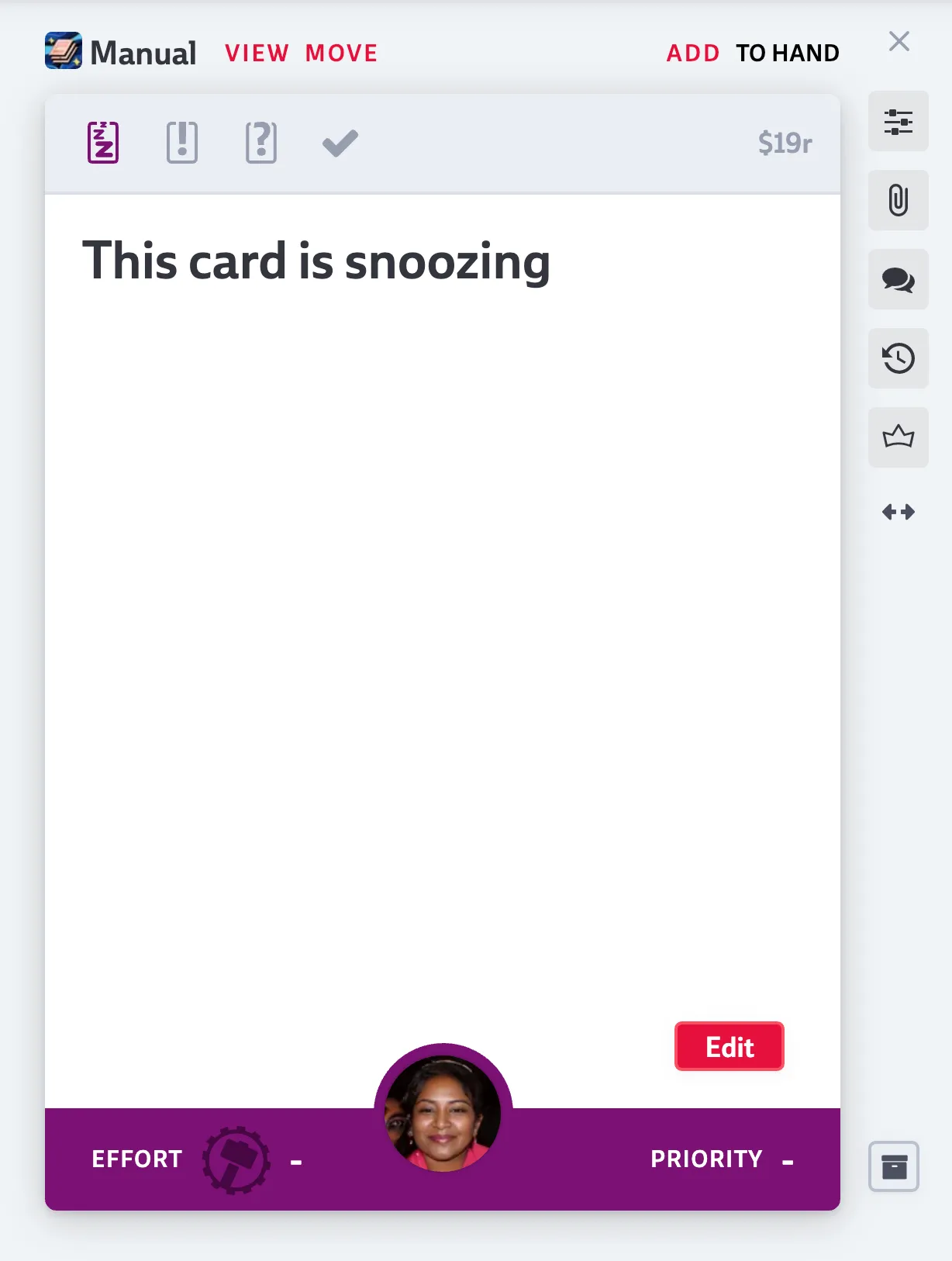
Once a card was started and hasn’t been touched in a long time, it will enter a snoozing state. This is basically the app asking: “Hey haven’t heard from you in a long time, is everything okay?”. You can hit the snoozing icon at the top of the opened card to continue. Changing a property or the card text will unsnooze the card as well.
This state should help you and your team identifying stale tasks. You can configure the time it takes for an untouched started card to snooze via the organization settings.